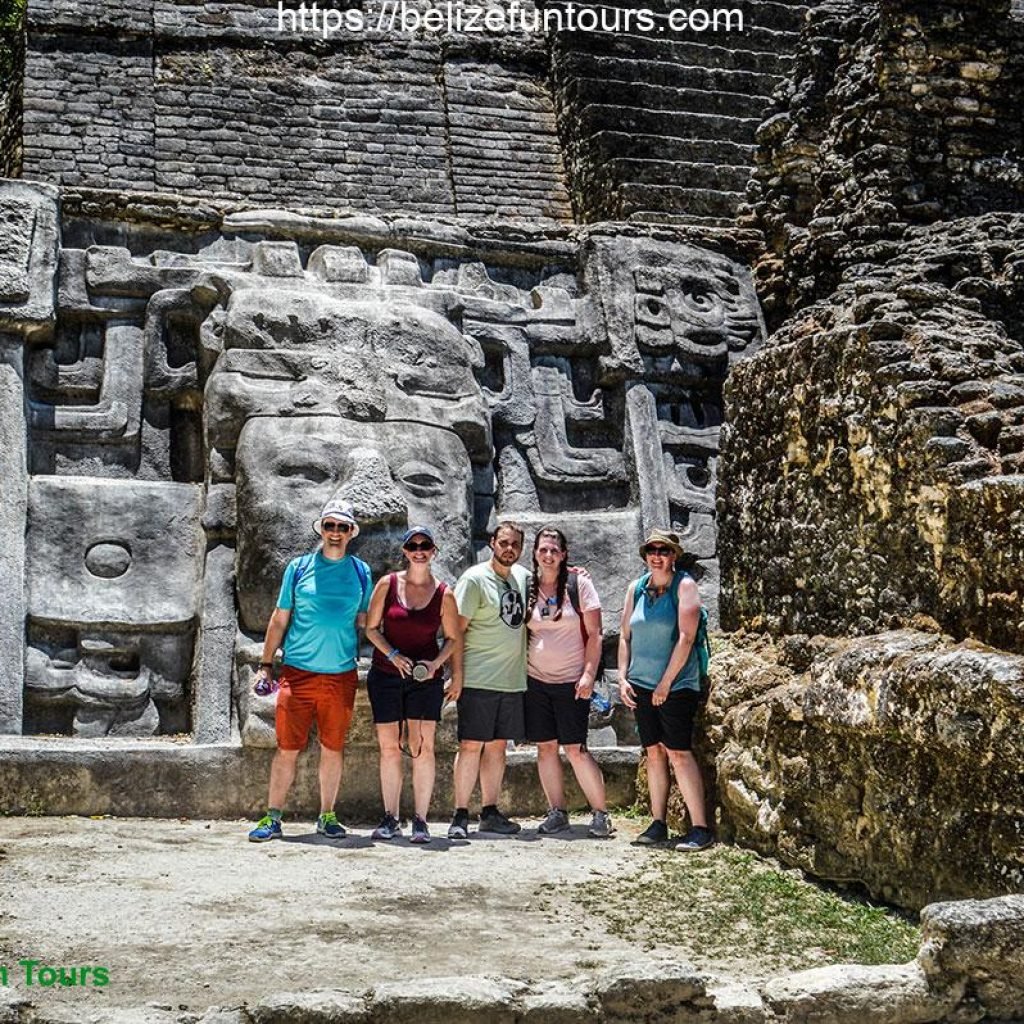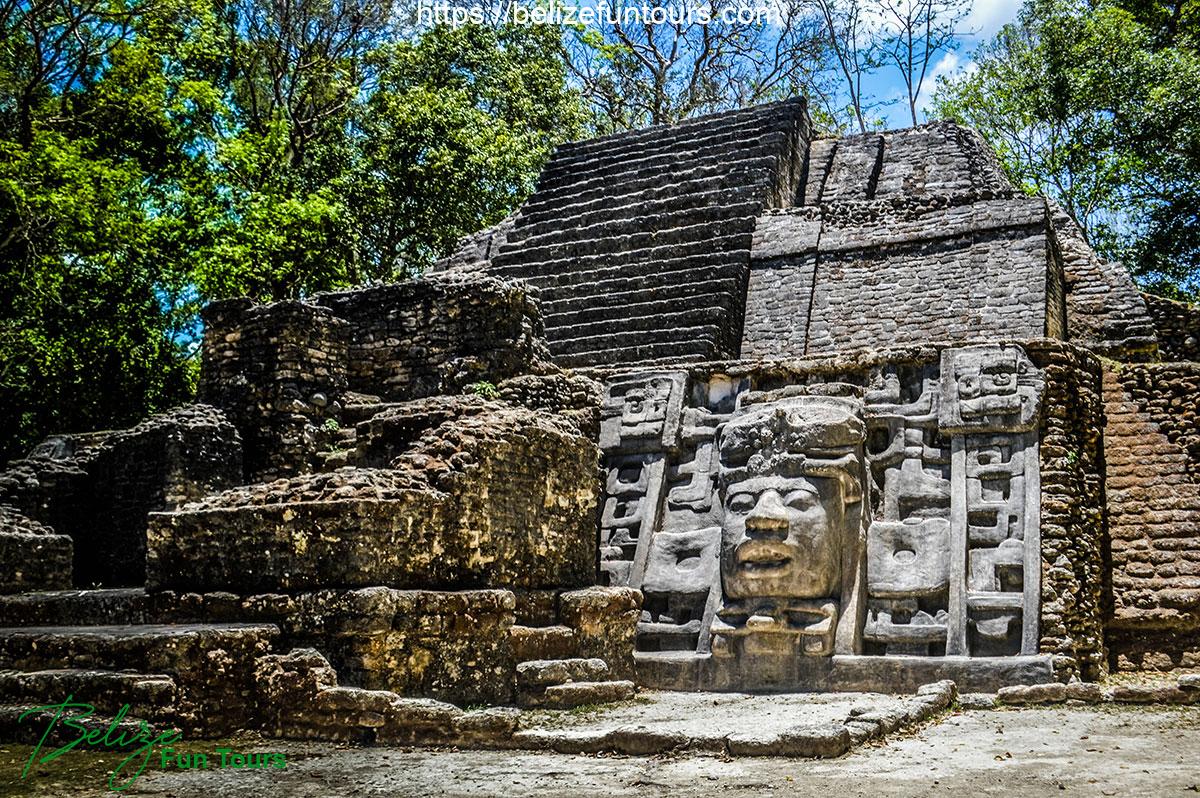The Mask Temple at Lamanai: A Glimpse into an Ancient Civilization
Nestled within the archaeological site of Lamanai in Belize stands a remarkable structure known as the Mask Temple. Referred to as Structure 9N-56, this temple derives its name from the two imposing carved limestone masks that flank its main stairway. In this detailed article, we will explore the rich history, distinctive features, and enigmatic burials associated with the Mask Temple, shedding light on the fascinating civilization that once thrived at Lamanai.
Unveiling the Ancient Masks
- Unusual Carvings
The Mask Temple at Lamanai is distinguished by its extraordinary limestone masks. These masks, unlike the more commonly used stucco molds of the period, were intricately carved. They are believed to depict one of Lamanai’s early rulers, adorned with a striking crocodile headdress. The Olmec influence is evident in the masks, with their distinctive rubbery lips and a broad “African” nose. - Symbolism and Meaning
The presence of the crocodile headdress on the masks provides insight into the city’s name, Lamanai, which translates to “submerged crocodile” in the Mayan language. The symbolism associated with the headdress suggests a connection to the ruling elite and the significance of crocodile symbolism in the region during the Classic Period.
Layers of History beneath the Surface
- Earlier Construction Phases
Beneath the current structure of the Mask Temple lie remnants of earlier construction phases. These earlier phases date back to the late Formative Period, spanning approximately 200 BC to 200 AD. The construction of the large carved masks was an integral part of this initial phase, demonstrating the temple’s early significance and its ties to the ruling elite. - Mortuary Temple and Burials
In the mid-5th century, Structure 9N-56 underwent a transformation and was rebuilt as a mortuary temple. During this period, two burials were interred beneath the temple. The male burial contained a remarkable assortment of jade artifacts, hinting at possible trade connections with regions such as Copan or Quirigua, where jade was plentiful. These burials align with the founding of the nearby cities and the prominence of jade mining in Guatemala.
Continuity and Ritual Practices
- Ritual Offerings and Pottery
Evidence suggests that the Mask Temple remained in use throughout the Classic Period, with various ritual practices and offerings taking place within its vicinity. Pottery fragments found in the temple’s surroundings indicate the presence of sacred rituals. Notably, Mayapan-influenced censers, used for burning incense during ceremonies, were deliberately shattered and left as ritual debris. These pottery pieces can be dated to the late Classic Period or early Post Classic period, providing insights into the temple’s ongoing significance. - Renovation and Stela Placement
During the temple’s re-foundation, a new platform was added to the front, accompanied by the placement of a Stela. This Stela, originally located elsewhere, was carefully moved to its new position. This renovation and the associated rituals mark a significant moment in the temple’s history, reflecting the perpetuation of religious practices and the reverence for ancestral traditions.
Preserving the Legacy

The Mask Temple stands as a testament to the ingenuity and cultural heritage of the ancient Maya civilization. The ongoing efforts by local authorities, international organizations, and archaeological teams ensure the preservation and conservation of this remarkable structure and its surrounding archaeological site. By protecting and studying sites like the Mask Temple, we can continue to unravel the mysteries of our past and gain a deeper understanding of the ancient civilizations that shaped our world.
As we stand in awe of the Mask Temple’s magnificent masks and its hidden burials, we are reminded of the enduring legacy left by the Maya civilization. Lamanai and its archaeological wonders serve as gateways to the past, inviting us to explore the vibrant history and rich cultural tapestry of ancient Mesoamerica.


0 Comment